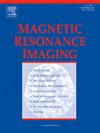Predicting sentinel lymph node metastatic burden with intravoxel incoherent motion diffusion-weighted imaging and dynamic contrast-enhanced magnetic resonance imaging in clinical early-stage breast cancer patients
IF 2
4区 医学
Q2 RADIOLOGY, NUCLEAR MEDICINE & MEDICAL IMAGING
引用次数: 0
Abstract
Purpose
The goal of this study was to investigate the value of IVIM-MRI and DCE-MRI in predicting SLN metastatic burden in clinical practice for early-stage breast cancer patients.
Methods
The clinicopathologic and MRI data from 132 early-stage breast cancer patients were retrospectively reviewed and analyzed using logistic regression to identify risk factors for a high SLN metastatic burden. The diagnostic performance of those factors was then assessed via receiver operating characteristic (ROC) curve analysis.
Results
Lymphovascular invasion (OR, 0.220; 95 % CI, 0.076–0.642; p = 0.006), Ktrans (OR, 0.971; 95 % CI, 0.944–0.998; p = 0.034) and D (OR, 1.010; 95 % CI, 1.003–1.017; p = 0.004) were independently associated with high metastatic burden. The area under the curve (AUC) for combined MRI & pathologic features (0.893; 95 % CI, 0.830–0.956; p < 0.001) and combined MRI (0.870; 95 % CI, 0.802–0.937; p < 0.001) was significantly higher than for each single MRI parameter alone (p = 0.002, 0.004), while the difference in AUCs between the combined MRI & pathologic features and combined MRI was not significant ((p = 0.154).
Conclusion
IVIM-MRI and DCE-MRI can be used to predict SLN metastatic burden in early-stage breast cancer patients in clinical practice.
临床早期乳腺癌患者体素内非相干运动扩散加权成像和动态增强磁共振成像预测前哨淋巴结转移负荷
目的探讨IVIM-MRI和DCE-MRI对早期乳腺癌患者SLN转移负荷的临床预测价值。方法回顾性分析132例早期乳腺癌患者的临床病理和MRI资料,运用logistic回归分析确定高SLN转移负担的危险因素。然后通过受试者工作特征(ROC)曲线分析评估这些因素的诊断性能。结果淋巴血管侵袭(OR, 0.220;95% ci, 0.076-0.642;p = 0.006), Ktrans (OR, 0.971;95% ci, 0.944-0.998;p = 0.034)和D (OR, 1.010;95% ci, 1.003-1.017;P = 0.004)与高转移负担独立相关。联合MRI的曲线下面积(AUC);病理特征(0.893;95% ci, 0.830-0.956;p & lt;0.001)和联合MRI (0.870;95% ci, 0.802-0.937;p & lt;0.001)显著高于单独的单个MRI参数(p = 0.002, 0.004)。病理特征及MRI综合分析差异无统计学意义(p = 0.154)。结论临床应用ivim - mri和DCE-MRI可预测早期乳腺癌患者SLN转移负荷。
本文章由计算机程序翻译,如有差异,请以英文原文为准。
求助全文
约1分钟内获得全文
求助全文
来源期刊

Magnetic resonance imaging
医学-核医学
CiteScore
4.70
自引率
4.00%
发文量
194
审稿时长
83 days
期刊介绍:
Magnetic Resonance Imaging (MRI) is the first international multidisciplinary journal encompassing physical, life, and clinical science investigations as they relate to the development and use of magnetic resonance imaging. MRI is dedicated to both basic research, technological innovation and applications, providing a single forum for communication among radiologists, physicists, chemists, biochemists, biologists, engineers, internists, pathologists, physiologists, computer scientists, and mathematicians.
 求助内容:
求助内容: 应助结果提醒方式:
应助结果提醒方式:


